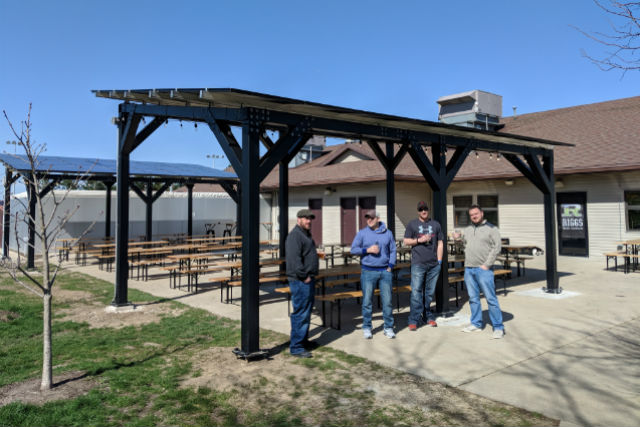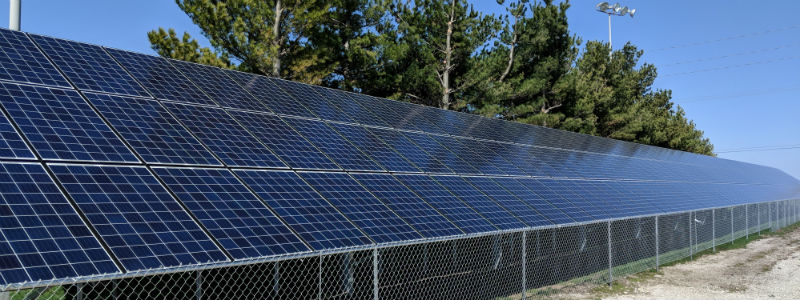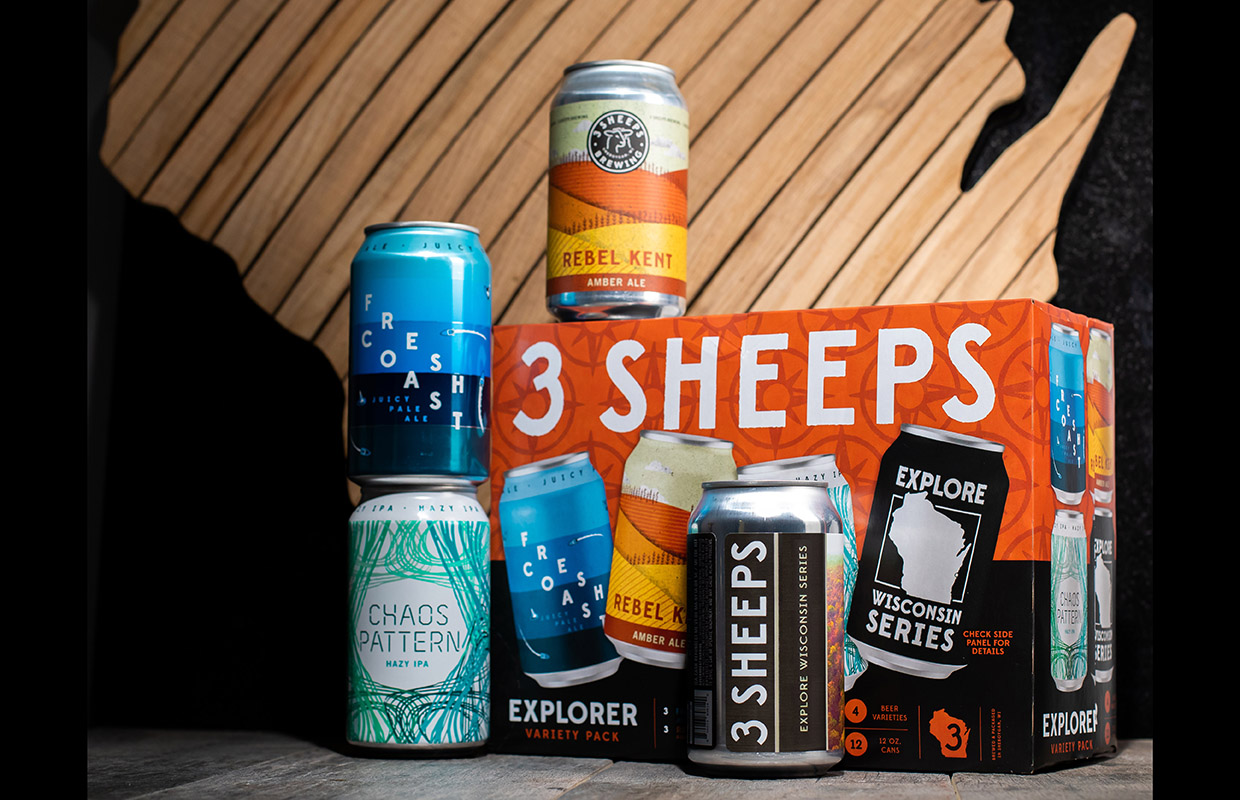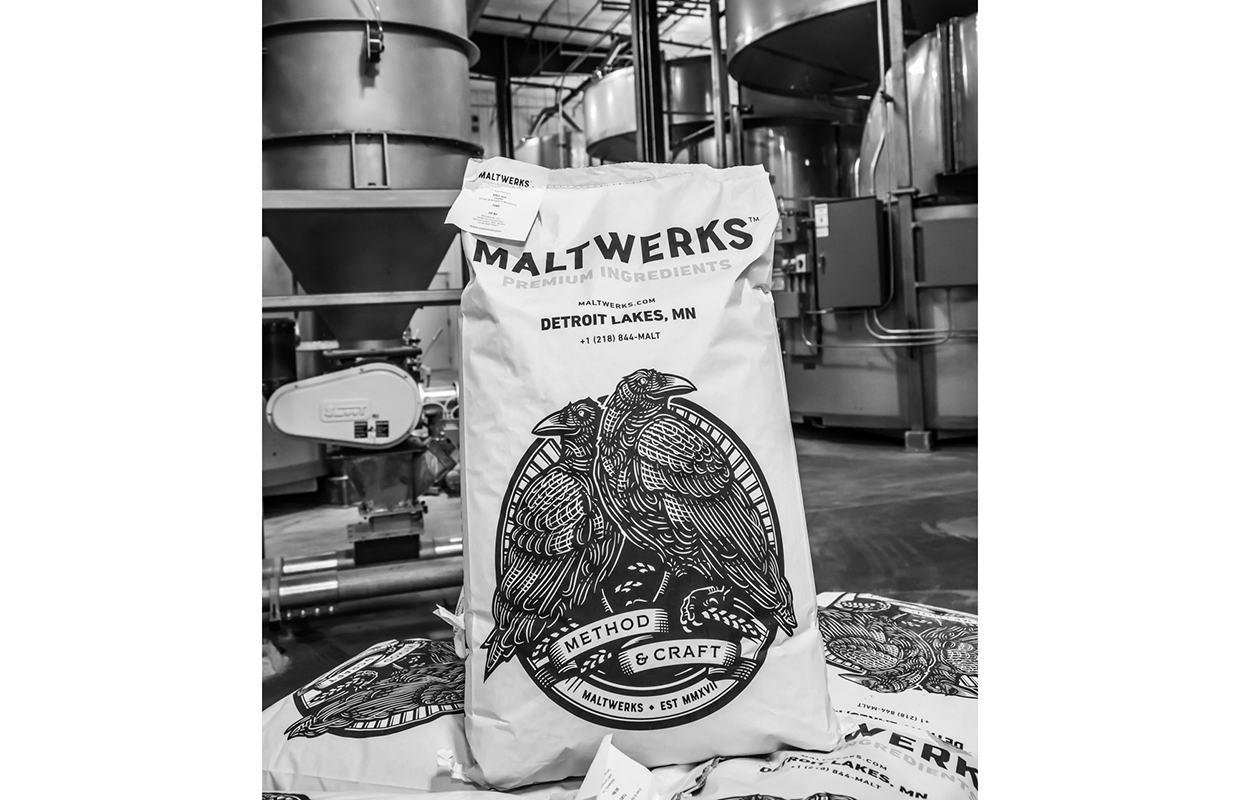
Matt and Darin Riggs aren’t into being flashy or playing into the hype. The Riggs brothers name their beers after the styles they make, which center around classic German beers, at the simply-put named Riggs Beer Company.
But there is a bit of an electric air around the brothers that will celebrate two years of opening in June, 2018. They have check marked “solar powered” off their bucket list after just 18 months of existence.
“For someone to say they can’t go solar, what that says to me is that it’s not a high enough priority for your company,” Matt said. The brewery finished the month of March fully on solar power, with some power to spare. “Solar is extremely competitive right now when it comes to price point of the system and payback period or the impact on your cash flow.”
When it came to a decision of where Riggs wanted to allocate the bit of extra cash, they could have increased volume, which was right around 1,000 barrels via draft-only, with a packaging line or more fermentation capacity pushing product further away from its home of Urbana, Illinois — to the brothers, the choice was simple.
“It was the last thing we want to do to bring on a whole bunch of debt and have to sell beer far away from the brewery,” Matt said. “That’s a bad position to be in. So it was easier to say let’s look at the cash flow that we’ve got and see if we can make a transition to solar instead.”
Solar was a plan from the start. Both graduated from brewery schools, Darin at UC-Davis and Matt at a school in Germany. While there, he said he saw solar quite a bit, yet not much in the states.
Matt admits having solar as an initial plan would have been overly aggressive to convince a bank to give a startup.
“They would have been like, ‘Whoa! They want us to finance a power plant to power a brewery that hasn’t sold beer yet. That’s probably a bridge too far,’” Matt said. “We knew that we’d have to start without it but we just kind of kept thinking now that the brewery is up and running and things are going like we hoped they would, we could give it a go.”
That was about one year in and by the end of 2017 it had become a reality as they were able to flip over to solar power in early 2018.
It took more research and effort than Matt thought it would be.
“You know I thought the maybe 40 or 80 hours of work would get us up and running from my side,” he recalled. “Obviously we didn’t install the system but just to do the research and bidding process it probably took triple that [time], to be honest.
“There’s things we hadn’t thought of. And when you get down into the weeds to compare different types of bids, sometimes it’s not comparing apples to apples. You’ve got two different concepts and you’ve got to go back and think which one of the concepts is better and make sure that they are still competitive on price. That took quite a bit of effort this last six months to get us over the hump. But I think it’s worth it still.”
The first thing a brewery has to do is build a financial model and make sure that it can withstand this additional upfront costs. Matt Riggs said things to know include how much electricity you’re currently using and what that price is by the kilowatt hour.
“You’ve got to look at what the installed price is and a system that can offset that, and what that is going to be,” he added. “You’ve got to include your insurance and then just break that down and make sure that it can cash flow or at least not have too negative of a cash flow direction.”
Riggs Beer did something pretty unique to get set up. Riggs asked their accountant if he knew of anybody that that could use depreciation and tax credits right away. He found a guy who needed exactly that tax saving. So that person started a company called Illini Solar Leasing.
ISL bought and installed the panels and Riggs Beer has a leasing contract with them with a buyout option at seven years, which is when most of the brewery’s brewing equipment will be fully depreciated and at that point they can use the tax credit/depreciation.
“So putting that structure together was pretty complicated because obviously there needs to be a contract in place between the lessee and lessor and we didn’t have access to a template. We couldn’t just Google it,” Matt said. “So we spent quite a bit of time with the with the guy that we’re leasing the system off of to draw up a good contract that was fair for both sides.
“That was one major hurdle but that allowed us to do it because if we tried to do it without using the tax credits and depreciation we would bankrupt the brewery. Or if we waited another seven years until the equipment was depreciated and install those panels, then we wouldn’t have been solar for another seven years. So to me it was kind of a creative way to do the right thing now instead of waiting.”




Be the first to comment